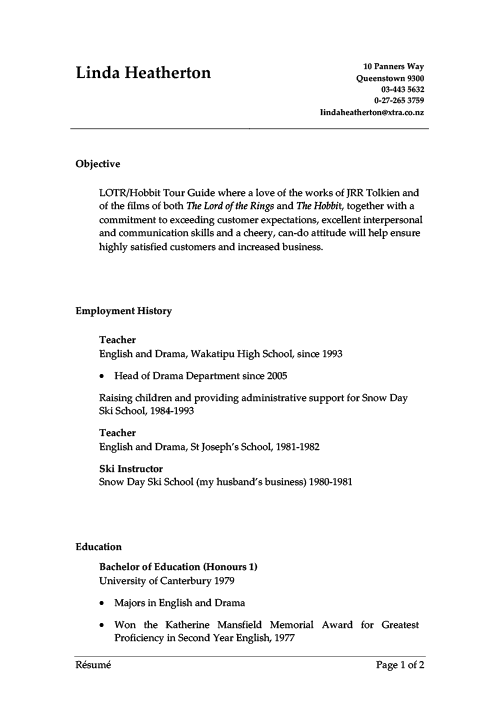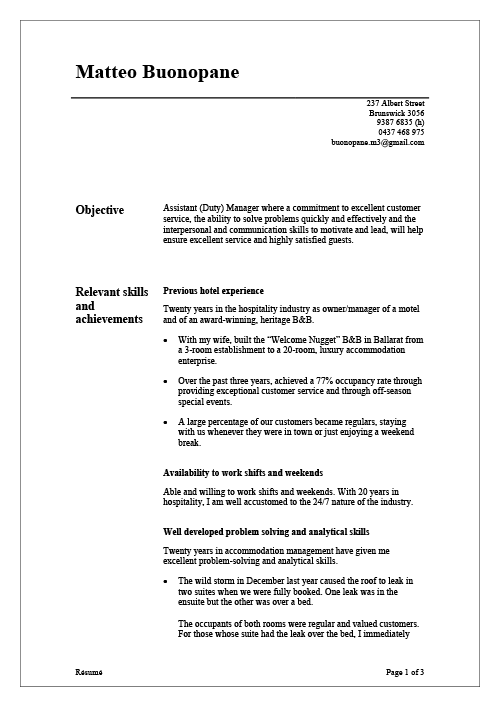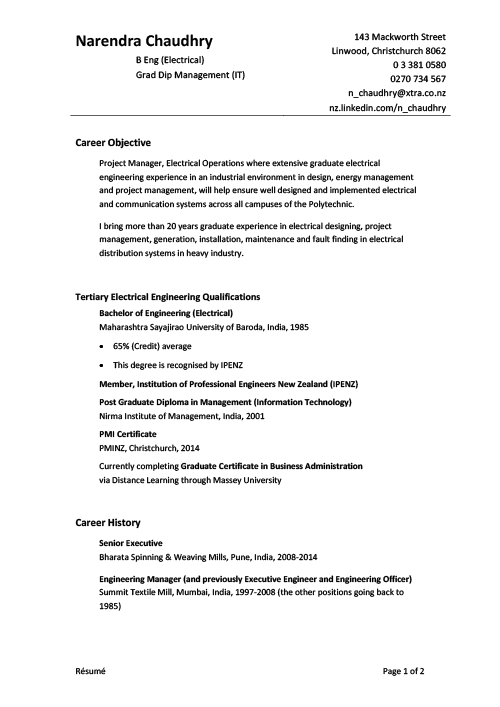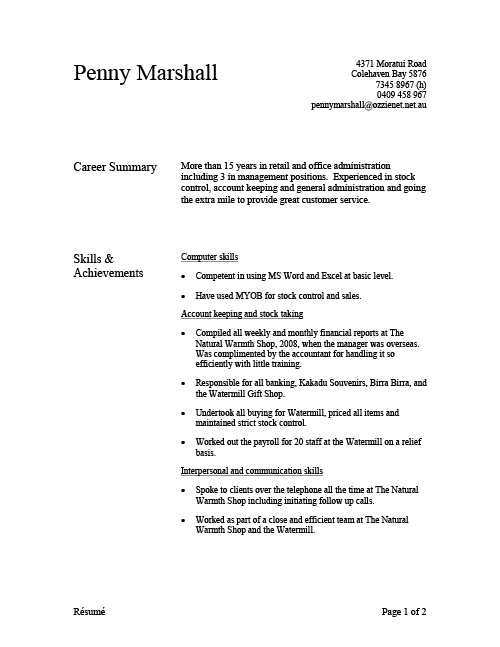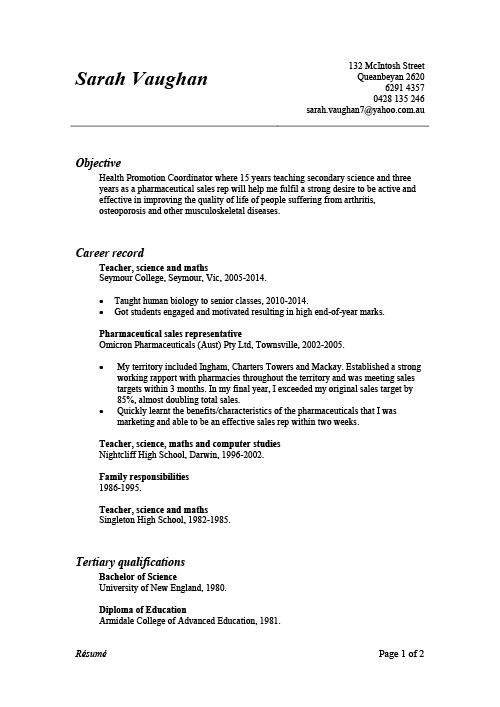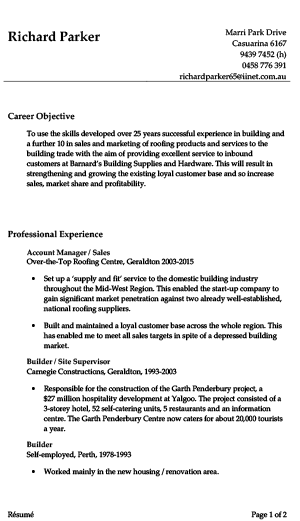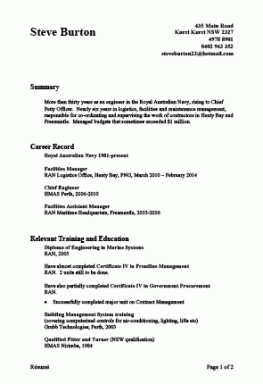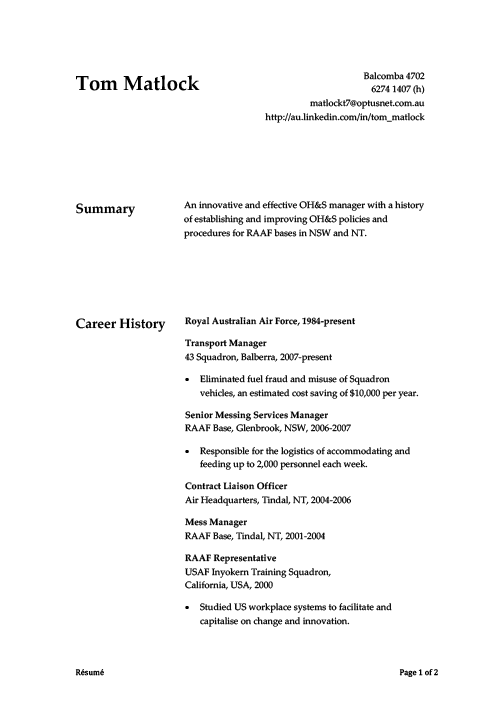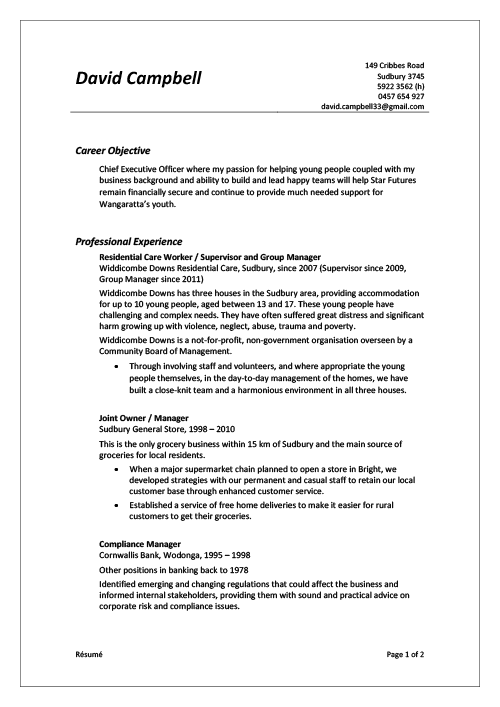
Resumes and Applications
Resumes are not easy things to write. "How do I start?" is a question many job seekers ask themselves. If you are a job seeker, the purpose of these specimen resumes and other application documents is to help you launch yourself into the process with confidence.
These documents are taken from the book How to Get a Good Job After 50: a step-by-step guide to job search success. They have been designed both to demonstrate how to write and to lay out effective job applications and for downloading to use as templates. There are 15 resumes, 7 cover letters, 2 expression of interest letters and 7 statements addressing selection criteria.
Five of these resumes are not accompanied by cover letters. This is purely to avoid unnecessary repetition and does not imply that cover letters are not always required. Unless there is a very good reason not to, you are advised always to send a cover letter with your resume.
Using the examples:
If you want to use these examples to get ideas as to how to write an application, you may find it best to read through documents in the 'Complete resumes and applications - PDF' section. More advice on how best to write the application can be found in chapters 3-7 in the book How to Get a Good Job After 50: a step-by-step guide to job search success. For more information about the book, click here.
To select a design for your own application, look through the examples in the 'Resumes, 1st pages - PDF' section and find a resume that you would most want your resume and other application documents to look like. Don't worry about the sort of job the resume is referring to, nor about the section headings. All that can be easily changed. Just find the resume that you would most want your resume to look like.
Then find that resume in the 'Complete applications - MS Word' section and download it to use as a template for your own resume. Download is free. A word of caution: the font used in the original may not be available on your computer so the MS Word version that you download may look different to the PDF.
Effective applications:
An effective application is one that grabs the employer's interest with the first few lines and then holds that interest all the way through. This is achieved by giving the employer the information that will help him or her envisage you performing well in the job. If you have the book, How to Get a Good Job After 50: a step-by-step guide to job search success, follow the follow the detailed guidelines in chapters 3-7 to make the necessary changes to make the downloaded template resume into your resume tailored for the specific job you are going for. For more information about the book, click here.
Do not be tempted to create a generic resume and send it out for lots of positions. A generic resume is unlikely to grab any employer's interest and will probably be binned. It's not necessarily the best qualified candidate who wins the job; more often it's the one who has put in the best application and performed best at the interview. If you want to put in the best application performance, just go for two jobs at any one time and put every effort into each application. Make sure that each resume and other application documentation is carefully tailored to the specific position you are applying for.
Note: these specimen resumes and other application documents are copyright. They may be downloaded by individual job seekers for use as templates. Otherwise, they may not be reproduced for any purpose whatsoever without written permission from the copyright owner.

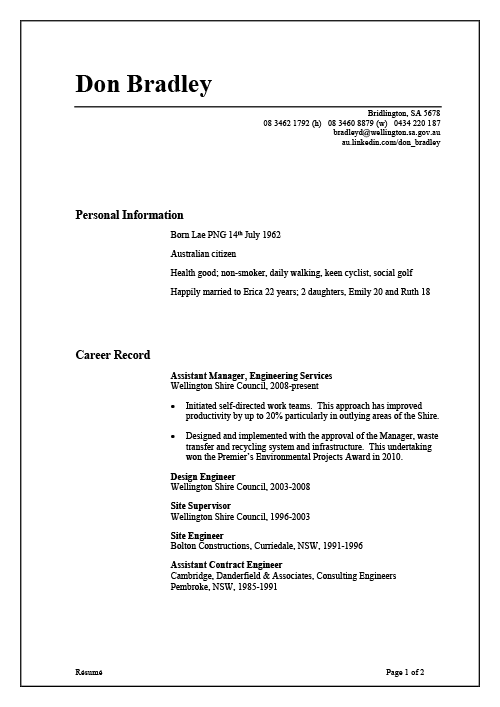
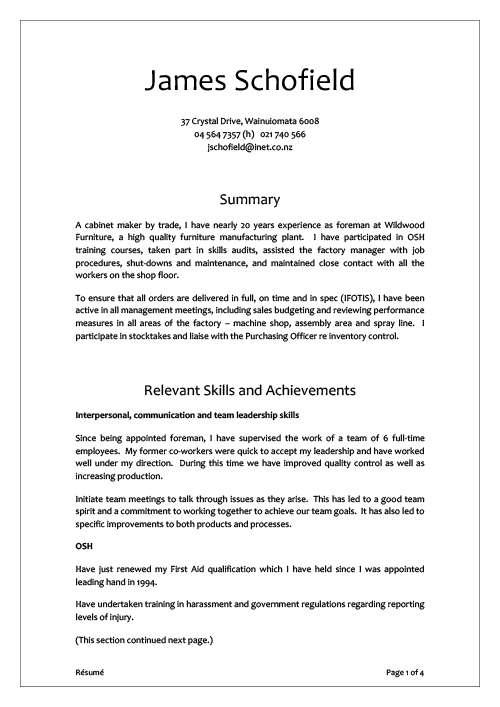
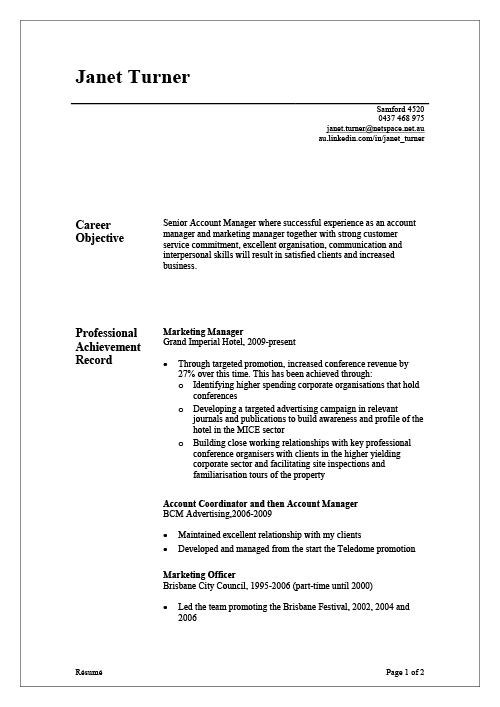
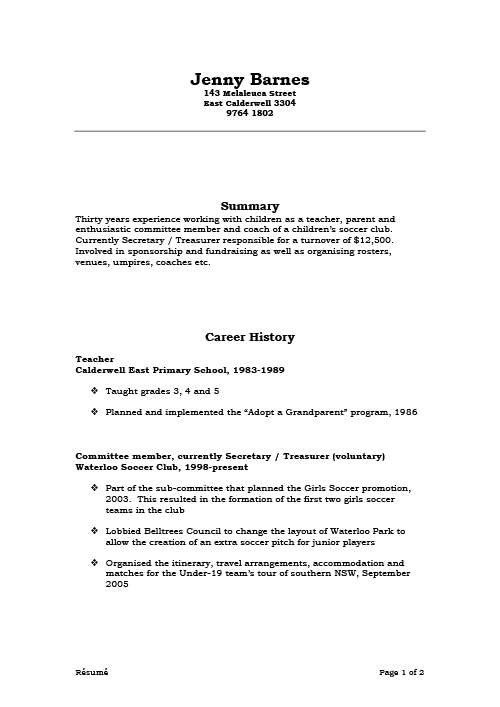
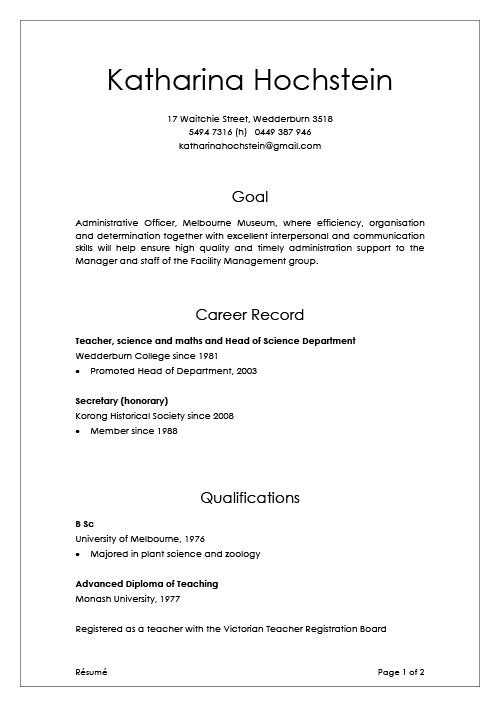
Katharina Hochstein
ResumeCover Letter (Editable)Statement Letter (Editable)Resume (Editable) Read more